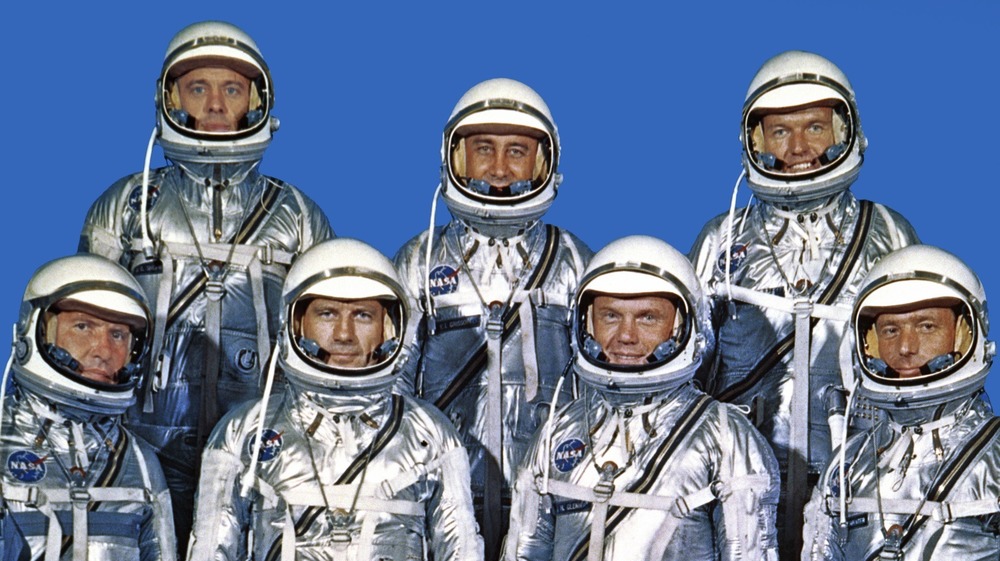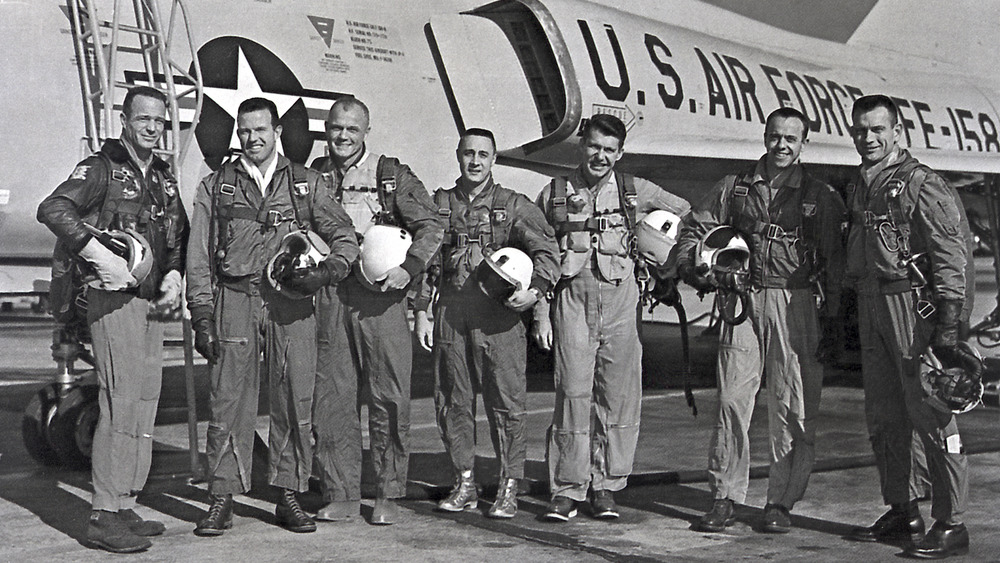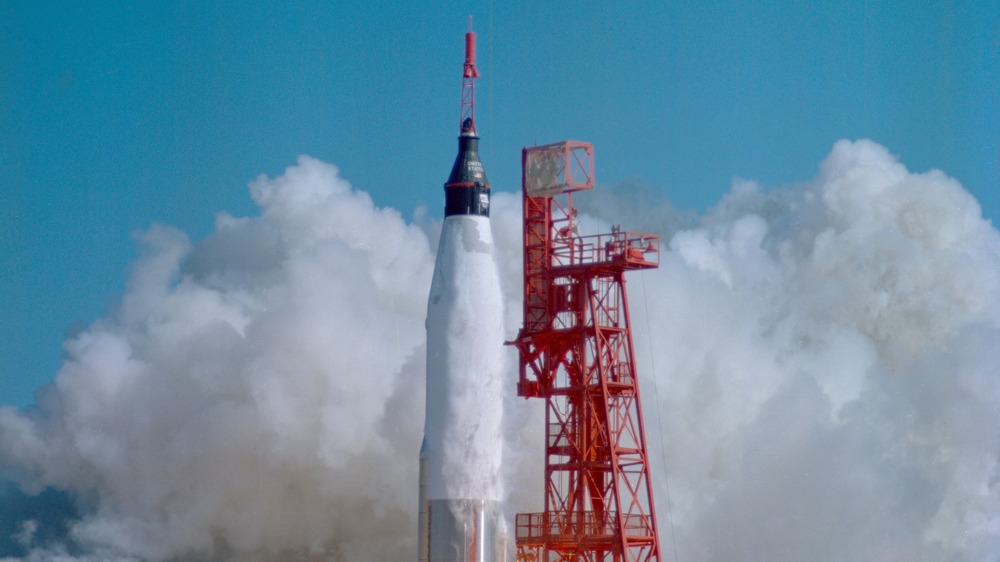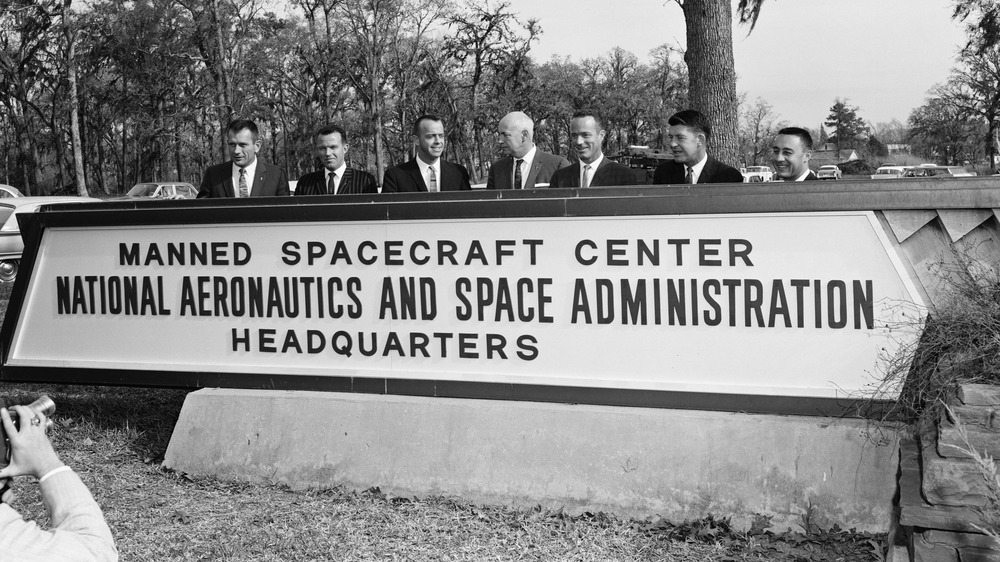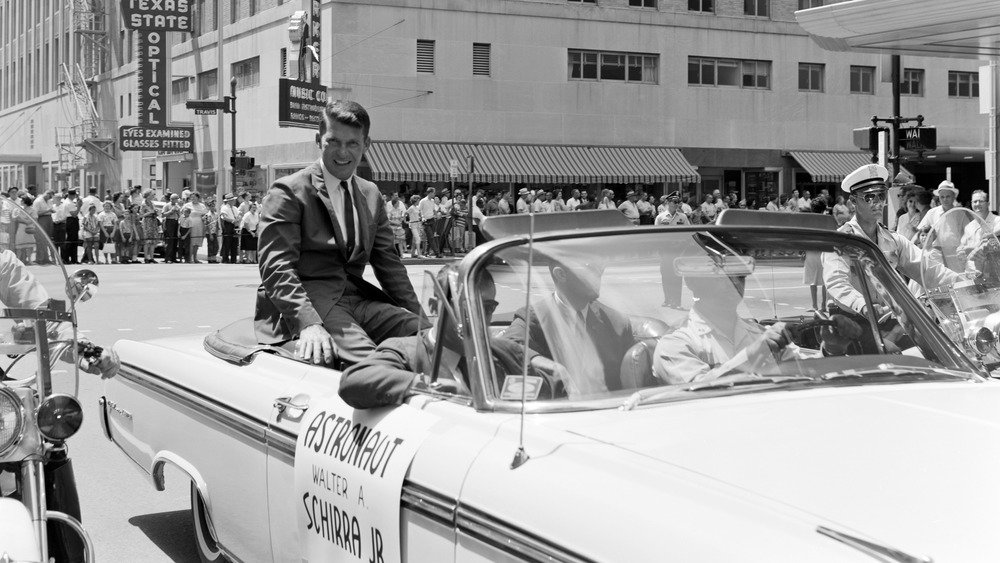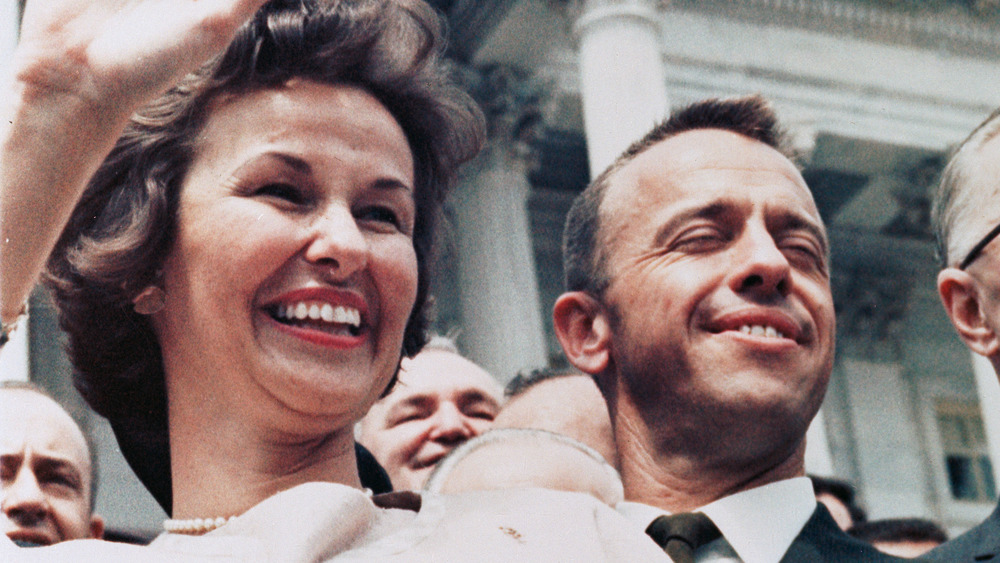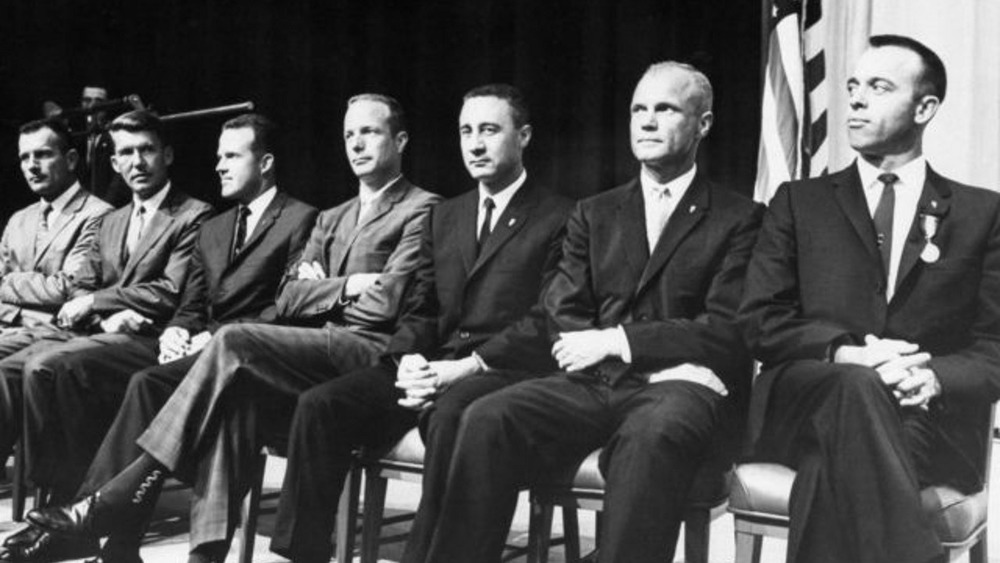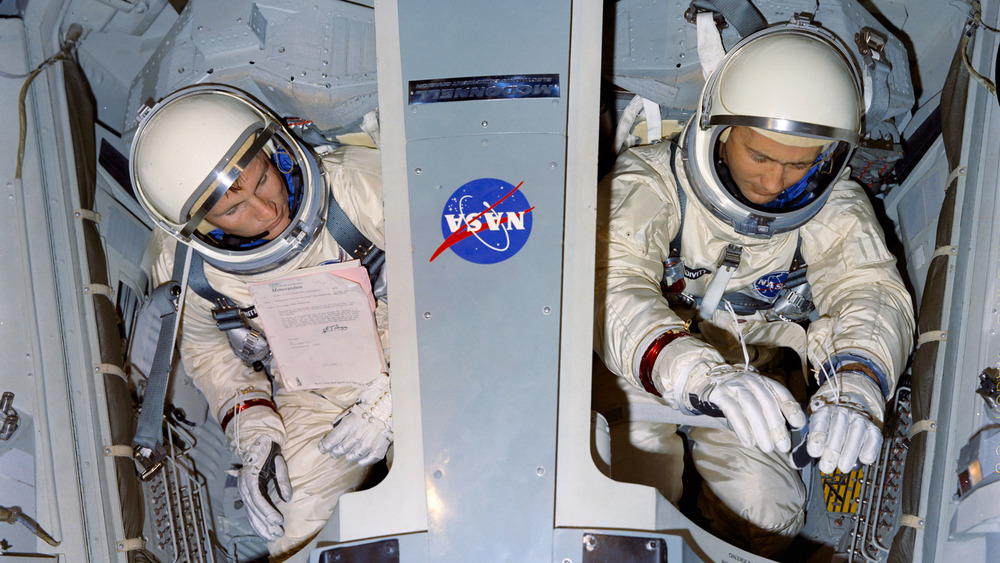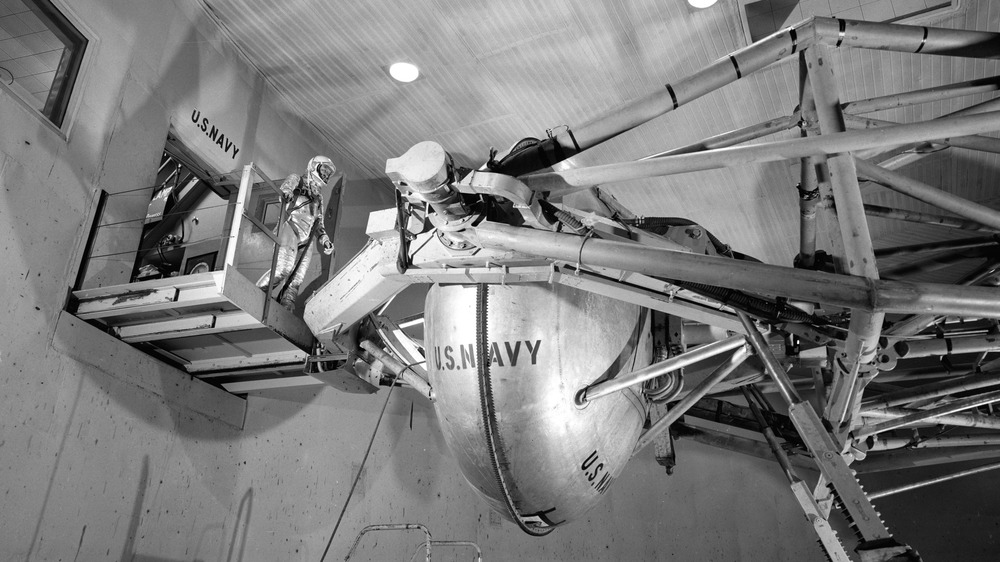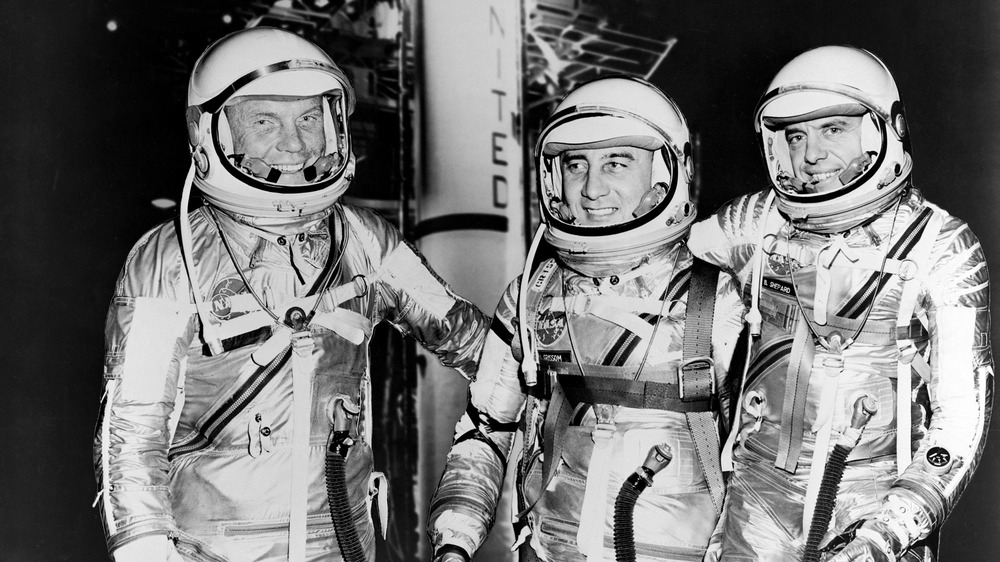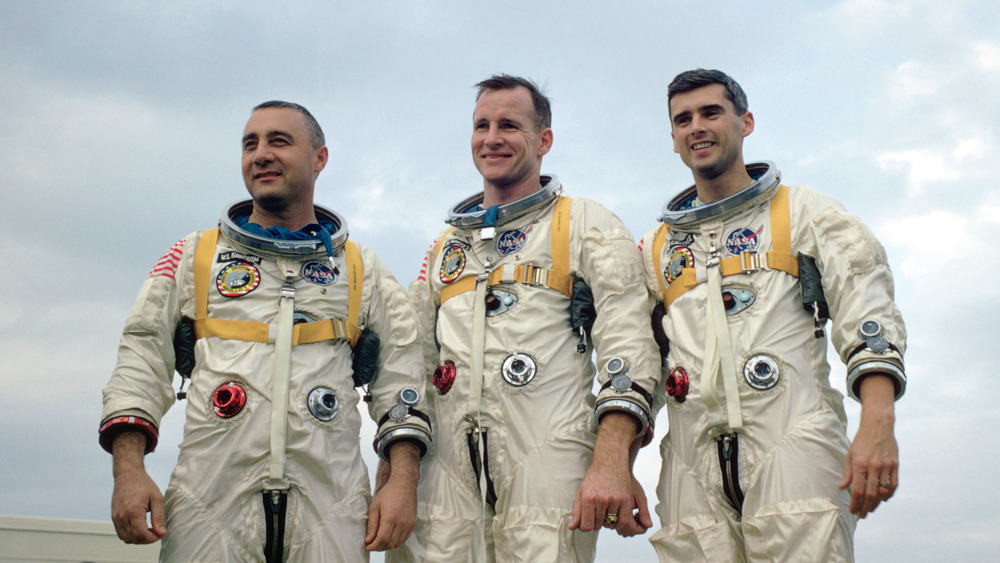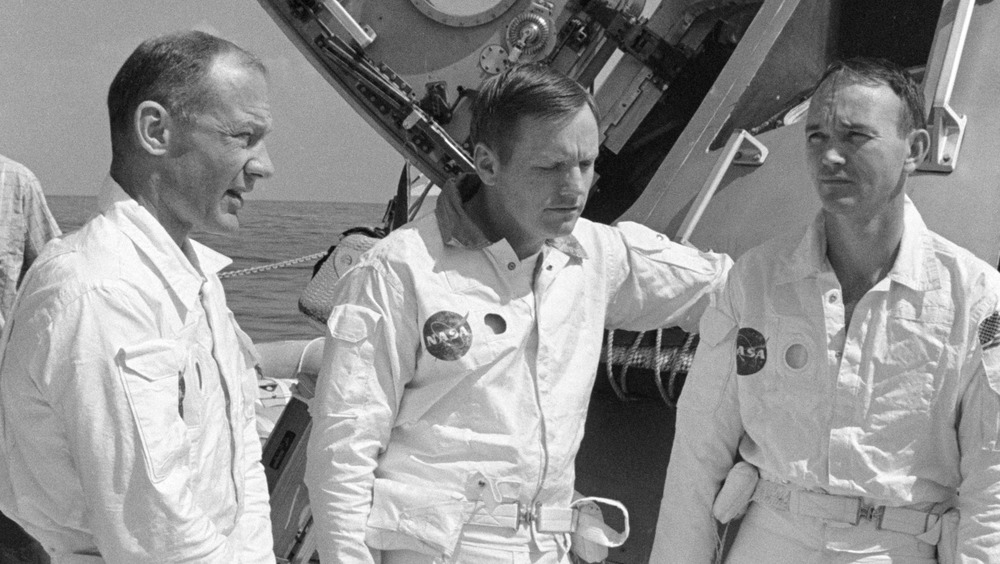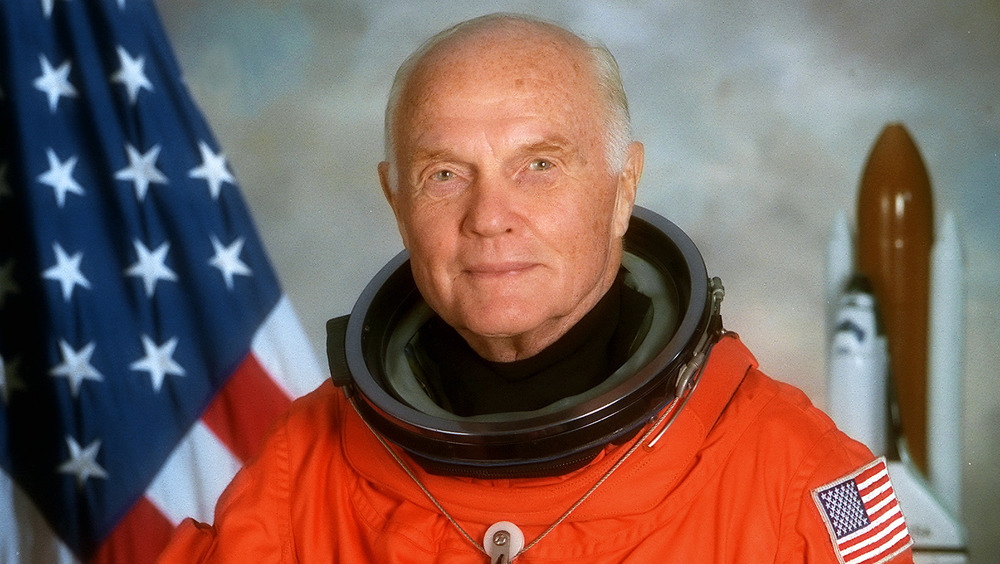What It Was Really Like To Be One Of The First U.S. Astronauts
Barely six months after the formal organization of the National Aeronautics and Space Administration (NASA) in October 1958, a room full of reporters and the world were introduced to the seven men the new agency had chosen to be the first Americans in space.
The first group of astronauts became known as the Mercury Seven, after Project Mercury. The seven men knew they were competing for the chance to go down in the history books. Alan Shepard would become the first American in space and John Glenn the first man to orbit the Earth, but the other five would also prove to be groundbreakers in their own right.
The competition for future missions got even stiffer in 1962, when NASA added a second group of astronauts. Known as the Next Nine, this group included Jim Lovell, who would be among the first crew to orbit the Moon in Apollo 8 and commander of Apollo 13, and Neil Armstrong, future first man on the Moon. Armstrong's fellow first Moon walker, Buzz Aldrin, was in 14-member Group 3, introduced the following year.
Treated like celebrities, revered as heroes, behaving like imperfect humans, the astronauts were more than the glossy photos splashed across Life magazine. From the home front to the final frontier, this is what it was really like to be one of the first United States astronauts.
The first U.S. astronauts were a homogenous group
Initially, the committee tasked with finding the first NASA astronauts for Project Mercury considered opening the process to anyone who thought they had the temperament for being strapped to a rocket and hurled where no man (or woman) had gone before.
But military man President Dwight D. Eisenhower decided that only one set of people truly possessed that kind of temperament — U.S. military test pilots who had clocked at least 1,500 hours of flying time. There were a few other criteria, including a bachelor's degree in engineering and being less than 40 years old and shorter than 5'11." As NASA's chief historian Bill Barry explained to The New York Times, this decision meant that the first U.S. astronauts would all be white men, since there were no female or non-white test pilots. There wouldn't be any female or non-white NASA astronauts until 1978.
With their orders in hand, in January 1959, the selection committee took the records of 508 test pilots and started whittling them down, finally confirming the Mercury Seven. There would be six more selection processes over the next decade, after which NASA significantly slowed astronaut recruitment.
NASA writes that the candidates underwent a series of psychological, physical, and health tests. But it's worth noting, as The Washington Post did, that the agency's final criteria for determining who has what author Tom Wolfe famously termed "the Right Stuff" is a mystery even to this day.
The first astronauts understood the danger
When NASA's first astronauts were recruited in 1959, no human had been to space. Soviet cosmonaut Yuri Gagarin became the first in April 1961.
Since 1948, the U.S. and U.S.S.R. had been experimenting with sending animals, but many did not survive. Even after the Mercury missions proved that it was possible to send a person to space and back safely, the subsequent Gemini and Apollo missions took those findings to the next level — literally aiming for the Moon.
The astronauts were acutely aware that they were signing up for a very dangerous mission. Rockets exploded on the launchpad with alarming regularity, and there was also the chance that you might somehow get stuck in space. Group 3 astronaut Bill Anders — part of the Apollo 8 mission that was the first to orbit the Moon — later told PBS that he thought there was a one-in-three chance they would die. After Gus Grissom returned from becoming the second American in space, he acknowledged, "I was scared a good portion of the time."
However, the astronauts saw their mission as an exciting challenge not just an incalculable risk. Their military careers had somewhat prepared them for harrowing situations. And as Anders' Apollo 8 crewmate — and future Apollo 13 commander — Jim Lovell told PBS, "I was ecstatic. To me, the idea of going to explore a new planet far outweighed the fear of something going wrong."
The astronauts took over areas of Houston
In September 1961, NASA announced plans to move the headquarters of its space program from Virginia to Houston. Construction on the Manned Spacecraft Center — now Johnson Space Center — began the following year, and in February 1964, NASA started moving its full staff into its new facilities. Many had moved in already, starting in 1962. That Independence Day, the city of Houston held a parade for the Mercury Seven, in which they were all given 10-gallon hats.
Formerly empty nearby subdivisions effectively became NASA company towns. Residents included engineers and designers, but of course, the most famous were the astronauts. Four of the Mercury Seven lived in subdivision Timber Cove, within several streets of each other, and they were joined by astronauts from the second and third groups a few years later. The fact that pretty much everyone in the neighborhood was playing some part in a historically significant mission contributed to a very close knit atmosphere. There were barbecues and cocktail parties, and a neighborhood swimming pool shaped like the capsules used on the Mercury missions.
Once the missions started, the neighborhood support took on a more important role. Neighbors did their best to protect the astronauts' privacy, lying to outsiders who asked for their addresses. According to the Houston Chronicle, when Jim Lovell finally returned to Timber Cove from the disastrous Apollo 13 mission, his neighbors held a candlelit procession, escorting his car home in respectful silence.
The first astronauts were celebrities
When the Mercury Seven were introduced at a press conference on April 9, 1959, they became national heroes — a cross between explorers and aviators, an image supported by their military service. It didn't hurt that they all looked like movie stars and were charismatic with the press. However, NASA initially resisted the publics' adoration. The agency hoped to present the astronauts as an extension of the nation rather than heroic individuals who might, say, have their own non-NASA approved opinions.
However, it soon became clear that the astronauts' celebrity status was a positive thing for the space program. If the tax-paying public was too busy fawning over the hunks in the shiny suits, they might overlook the enormous chunk of money being used to propel them into space.
It also kept the public invested in the Cold War. The Soviets had surged ahead in the space race in 1957, when Sputnik became the first satellite in space. The astronauts represented the patriotic American answer to Soviet domination. They weren't just daredevils driven by the desire for glory, or even for human advancement — they were risking their lives to show the Soviets that America was the dominant power. As Apollo 8 astronaut Frank Borman put it to PBS, "Any idea that the Apollo program was a great voyage of exploration or scientific endeavor is nuts. People just aren't that excited about exploration. They were sure excited about beating the Russians."
Being one of the first astronauts caused problems at home
The first astronauts were perceived as upstanding American role models. But behind the scenes, many had tumultuous personal lives.
Being married to a test pilot brought its own challenges, from being frequently left alone when your husband was deployed, to knowing that any day you could answer the door to one of his ashen-faced colleagues, informing you that your husband had died. Being married to an astronaut also meant spending long stretches of time apart and a constant fear that he might die but also threw in paparazzi and media attention.
This was especially hard to deal with given that some of the astronauts used their celebrity status to have affairs. According to The Washington Post, the most notorious was Alan Shepard, the first American to travel to space. Shepard's infidelities eventually became so infamous that John Glenn — who was famously loyal to his wife and family — was asked by NASA to step in and remind Shepard that they were supposed to be representing American values. Of the 30 married astronauts recruited in the first ten years of the space program, 23 eventually divorced.
With their husbands constantly otherwise engaged, the wives leaned on each other, especially during missions or after accidents. Marilyn Lovell, wife of Apollo 13's Jim Lovell, told PBS, "You're on a mission together."
The first astronauts made an infamous deal with Life magazine
The press conference introducing the Mercury Seven gave the astronauts and NASA a sense of the media frenzy they could expect for the rest of the program. Harassment of their families started immediately, with reporters staking out their houses.
In an effort to control access to the astronauts — and the astronauts' abilities to air their own non-NASA-approved views — NASA signed a contract with Life magazine that gave the publication exclusive access to the astronauts' personal stories. In exchange, Life gave NASA and the astronauts approval rights over all content concerning them — and $500,000 to split between the seven men (around $4,475,500 in 2021). According to the Atlantic, Life covered the astronauts in 28 issues between 1959 and 1963 and even published articles with their bylines, ghostwritten by Life writers.
The contract had the desired effect. It ensured that the astronauts came across as noble American heroes, rather than the adrenaline junkie partiers you could argue that some of them were away from the cameras. Life reporters and photographers witnessed much of this behavior, but it never made it to the press.
There was a competitiveness between the astronauts
You don't get to be one of seven men chosen to potentially be the first American in space — from a field of 508 — without being competitive. And it wasn't just the Mercury Seven. When the Apollo astronauts went to Iceland for training in 1965 and 1967, an exercise called the "Moon Game," based on collecting geology samples, was enough to provoke their competitiveness.
After all, even when they learned they were officially part of NASA's astronaut program, there was always a battle to be the one chosen for missions — especially the most exciting ones. This was extra fierce when it came to the very first mission — the first American to go to space.
Of the original group, Alan Shepard — the man who eventually claimed that title —has been identified as "probably the most pushy of the seven," as the BBC's former aerospace correspondent Reginald Turnill put it. In an interview in 1998, Shepard recalled that although some of the Mercury Seven were friends, once they were in the program, they all understood that they were competing for the same prize and became wary of sharing too much information with their rivals. "... here was competition... that seven guys going for that one job," he said.
Training was full-on and expansive
Not knowing what conditions the astronauts would face in space, NASA's approach to training was to prepare them for as many scenarios as possible. They even completed jungle training and desert survival, in case of a crash landing.
They also had to prepare for the physical impact of space travel. Robert Voas, who compiled the astronauts' training program, told an interviewer that the two major physical challenges were the gravitational forces felt during liftoff and reentry and weightlessness. They practiced for the former in the centrifuge, but to avoid injuring the astronauts, they didn't go much higher than 7-G.
Weightlessness training was a favorite. As the BBC explains, in the early 60s, this was achieved for about 20 seconds at a time by flying a plane in a parabolic curve. "Everybody thought that was so much fun," Voas remembered. Since the capsules would land in water, the astronauts also had to do lots of waterborne training.
Less fun were the engineering classes and lectures on everything from physiology to aeronautics. Voas assigned each astronaut to learn one of the Mercury capsule's systems, which were still being built, and to work with the engineers to make it as astronaut-friendly as possible. They also had to learn astronomy, so they could navigate by the stars. On top of all this, the astronauts did four hours of exercise and three hours of flying a day.
Early spacesuits were relatively primitive
The spacesuits worn for the Mercury and Gemini missions were pretty basic and not the huge onesies and shiny visors pictured today.
Since the astronauts weren't going to leave the space capsule during the Mercury missions, the suits didn't need fancy contraptions like life support. Instead, they were adapted from pressurized suits worn by U.S. Navy pilots flying at high altitude, made from aluminized nylon on the outside with a lining of neoprene-coated nylon. The suits were hard to move in when pressurized — a fault that was fixed for the Gemini missions — and were intended to be worn unpressurized except in emergencies.
According to The Washington Post, the Mercury suits also had an early version of a health tracker — a "biometric connector" that measured things like heart rate and body temperature. One cool feature were the gloves with lights in the fingertips, so the astronaut could still see the instruments in the dark.
Like everything in the early days of the space program, the suits were a work in progress that were updated as new issues emerged. Sadly, they were too late with one development — it wasn't until fire killed three astronauts on the launchpad that fireproof suits were made.
Seven of the first 30 U.S. astronauts died over three years
Of the 30 men in NASA's first three groups of astronauts, seven died between 1964 and 1967. An eighth astronaut, Edward Givens, from Group 5, also died in a car crash on June 6, 1967.
On Oct. 31, 1964, Theodore Freeman of Group 3 was killed when a goose flew into one of the engines of his T-38 as he attempted to land at Ellington Air Force Base. Freeman had been flying back from training at the McDonnell-Douglas facility in St. Louis, home to the Gemini capsules. Nearly three years later, on Feb. 28, 1966, Elliot See of Group 2 and Charles Bassett of Group 3 were killed in their T-38 during a botched landing in bad weather at McDonnell-Douglas. On Oct. 5, 1967, Clifton Williams of Group 3 died when a mechanical failure caused his T-38 to crash.
The most infamous early NASA tragedy happened a few months earlier, on Jan. 27, 1967. Gus Grissom, one of the Mercury Seven, Ed White of Group 2 and Roger Chaffee of Group 3 were running tests in the cockpit of Apollo 1 when a spark ignited the pure oxygen atmosphere. According to ArsTechnica, the hatch took at least 90 seconds to open, and the astronauts were unable to depressurize the cabin. They passed out and asphyxiated from the toxic fumes created by burning space capsule, dying within minutes.
The early astronauts formed unique bonds
Being one of only a handful of people who knows what it's like to go to space creates a special kind of bond. It also helped that many of the astronauts already knew each other from their military careers — although they weren't all friends. Of the Mercury Seven, Alan Shepard and Deke Slayton later wrote that they found John Glenn's "moralizing" annoying and that it caused tension in the group.
However, Shepard still managed to find sympathy for the other six men when he was announced as the first man in space. He recalled to an interviewer in 1998, "feeling, of course, totally elated... that I had won the competition. But ... almost immediately afterwards feeling sorry for my buddies. Because... they were trying just as hard... They all came over, shook my hand, and pretty soon, I was the only guy left in the room."
In many cases, the camaraderie lasted longer than the missions. Also in 1998, Buzz Aldrin told an interviewer that the Apollo 11 crew that made the first trip to the Moon "is still closely bonded together because of our fantastic shared experiences." When Gordon Cooper died in 2004, CBS quoted fellow Mercury Seven member Wally Schirra telling Associated Press Radio, "We were probably the most bonded seven men in the history of aviation and space and mankind, and to lose another one is pretty tough for us."
Some of the first astronauts had later space careers
For some of the first astronauts, the space race didn't end in the 60s. On Oct. 28, 1998, John Glenn — the first American to orbit Earth — broke another record when he became the oldest person to ever go to space, aged 77. Glenn spent nine days in space on the shuttle Discovery, where he conducted a series of tests to see how space affects the body.
Two of Glenn's fellow Mercury Seven members also made later space trips. After becoming the first American in space in May 1961, Alan Shepard was grounded by an ear condition, according to the BBC. After years of frustration at a desk job, in 1969 Shepard had surgery that fixed the issue, and in 1971 he commanded Apollo 14, the third Moon landing.
Considered a fossil when he asked NASA to let him join the Apollo program, Shepard was helped by fellow Mercury Seven astronaut Deke Slayton, who was by then in charge of the selection process. Slayton knew what it was like to miss out on a space flight because of illness. Three years after being selected for Project Mercury, he was diagnosed with a heart condition and grounded. Slayton spent the next eight years holding senior positions in NASA and working on his health. In 1970, he was declared fit to fly, and in 1975 he finally went to space, participating in the first in-space meeting between U.S. and Soviet astronauts.
